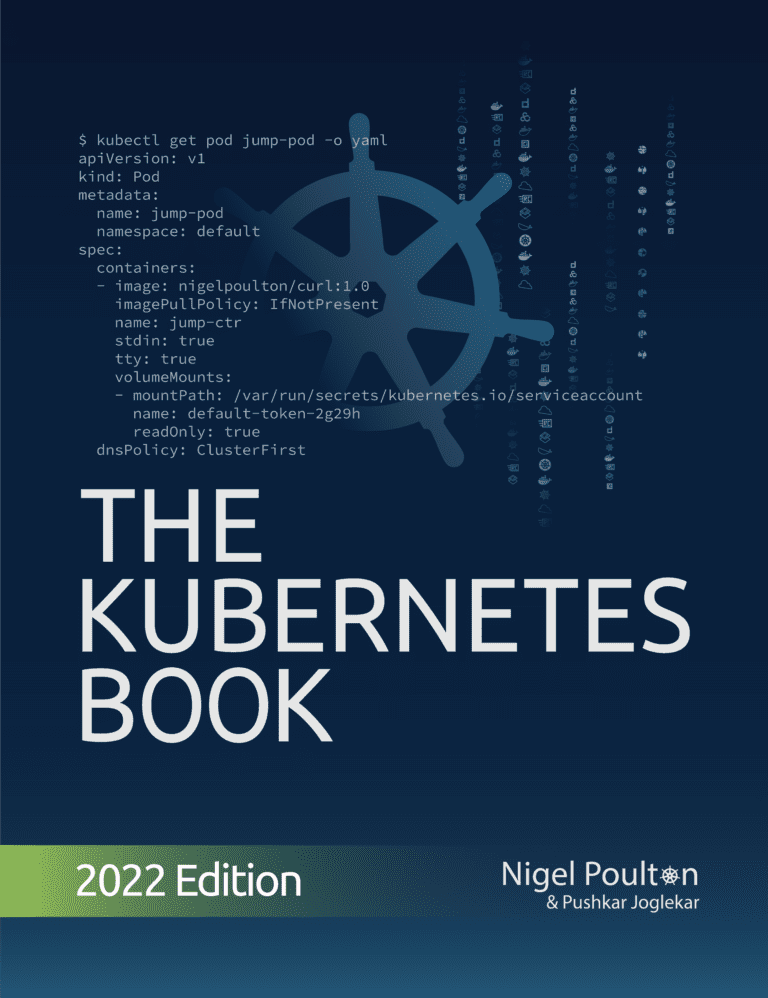Titel: “The Kubernetes Book”
Edition: 2022
Author: Nigel Polton
Link: Nigel Polton Website

Many people who tried to learn more about Kubernetes or Docker have heard the name Nigel Polton. He is one of the old guys or captains in this domain and prepared many Kubernetes and docker training videos, and tutorials besides the books.
During the Christmas holidays, I was interested in refreshing my knowledge of Kubernetes, so I thought reviewing Nigel’s book, could be helpful. I have his docker book and I try to find time and review that too in these days.
The book has 16 chapters and starts with good basic information about concepts like microservices and cloud-native apps. Then it talks about Kubernetes’s history. Something that was interesting or at least I didn’t remember whether I read about it before or not, was Borg and Omega at Google and how Kubernetes came out. In addition, it describes K8s as a cloud operating system (OS) and abstraction which is provided.
In the second chapter, we learn more about major Kubernetes cluster components such as control nodes, worker nodes, pods, deployment, and services. As it takes you through the control components, it describes them so that you can easily understand them.
Chapter three covers ways to get Kubernetes cluster up and running on your lab machine and review hosted services like GKE. Then, you will have the pilot K8s cluster for rest of the chapters.
Chapter 4 goes into Pod details. We learn why K8s works with Pods and not containers directly. Then you will learn about Pod manifest and its specs. Nigel suggest you watching “Inception” movie to understand relation of Pods and containers better. I liked the multi-container descriptions in this chapter.
In next chapter, we learn how we can partition single cluster to multi virtual cluster using Namespaces. Among the things I like about this book is that it doesn’t waste your time and delivers what you need to know.
Deployments and Services are main topics for chapter six and seven. How ReplicaSet is different to Deployment is important that you should know.
Ingress and web application access through single LoadBalancer is topic of chapter 8. We learn what issue Insgress is resolving. In the next chapter, the book dives deeper into Service Discovery and how it’s implemented in K8s. You will not be left in the dark about service discovery and DNS stuff in Kubernetes after reading this chapter.
In this state you have learned about the basic things around Kubernetes, so in the following chapters, book focuses on more advance topics. K8s storage is covered in chapter 10 and you will learn about Kubernetes persistent volume subsystem and CSI.
ConfigMaps and Kubernetes Secrets have been covered in chapter 11 and I am sure that we can find lots of use cases in real projects. Next four chapters are dedicated to StatefulSets, RBAC, API and K8s Security and you will get good info but I think this topics need more resources fo reading and practicing.
To wrap up, this book was a great option for refreshing my knowledge and reviewing key Kubernetes concepts and I recommend it.